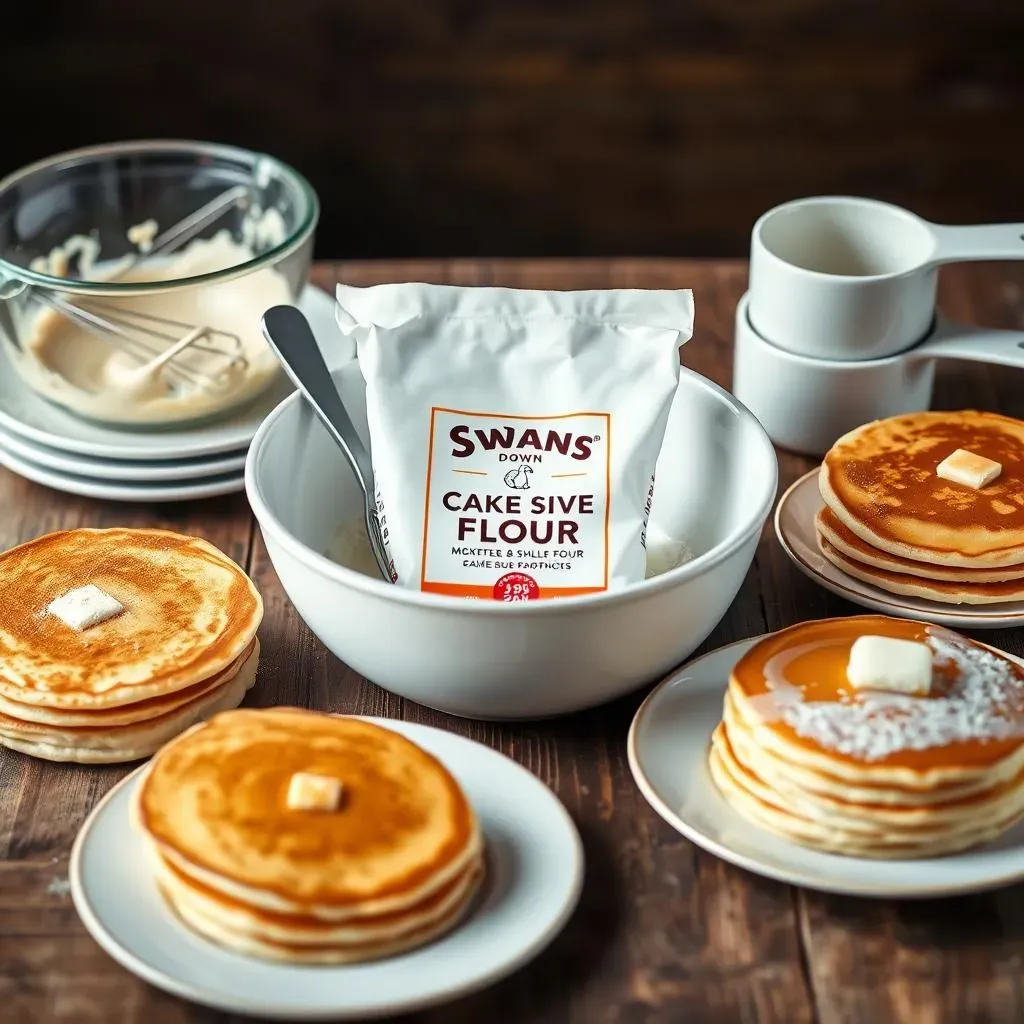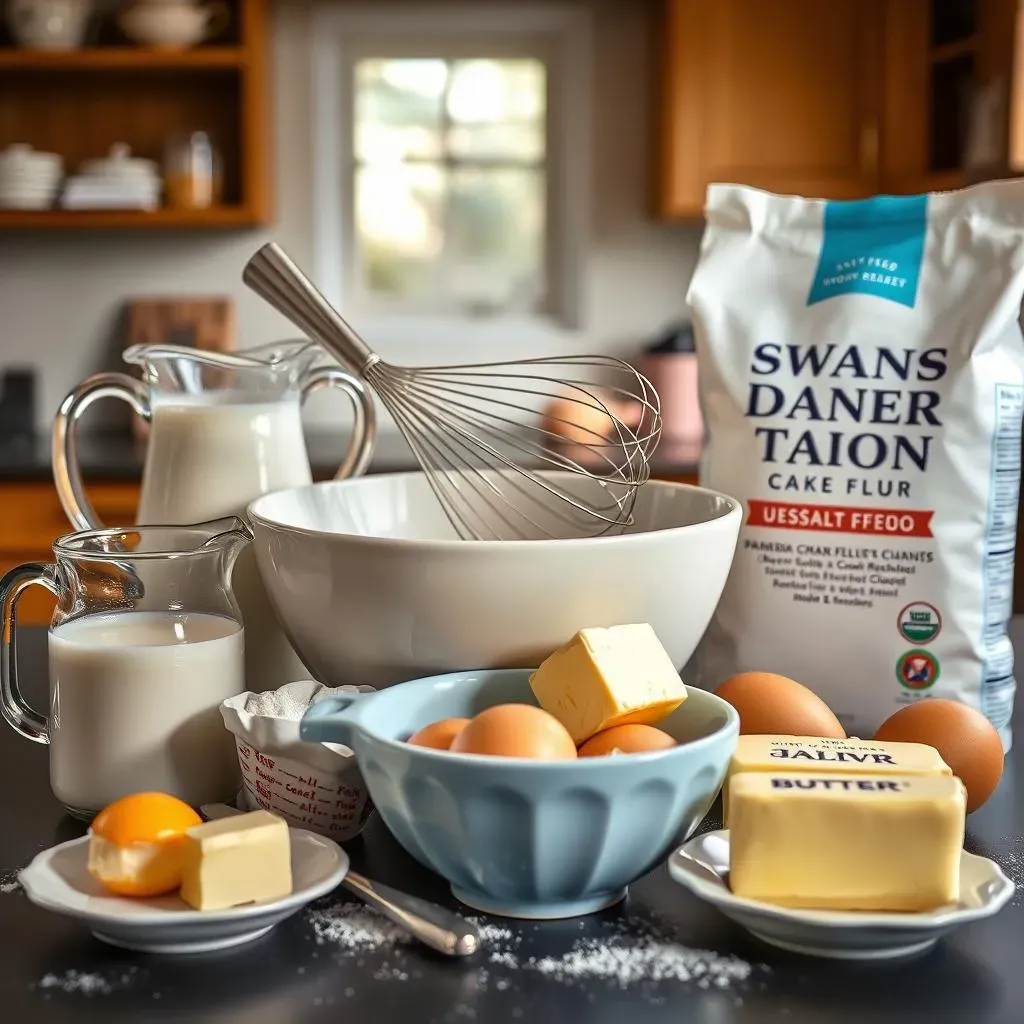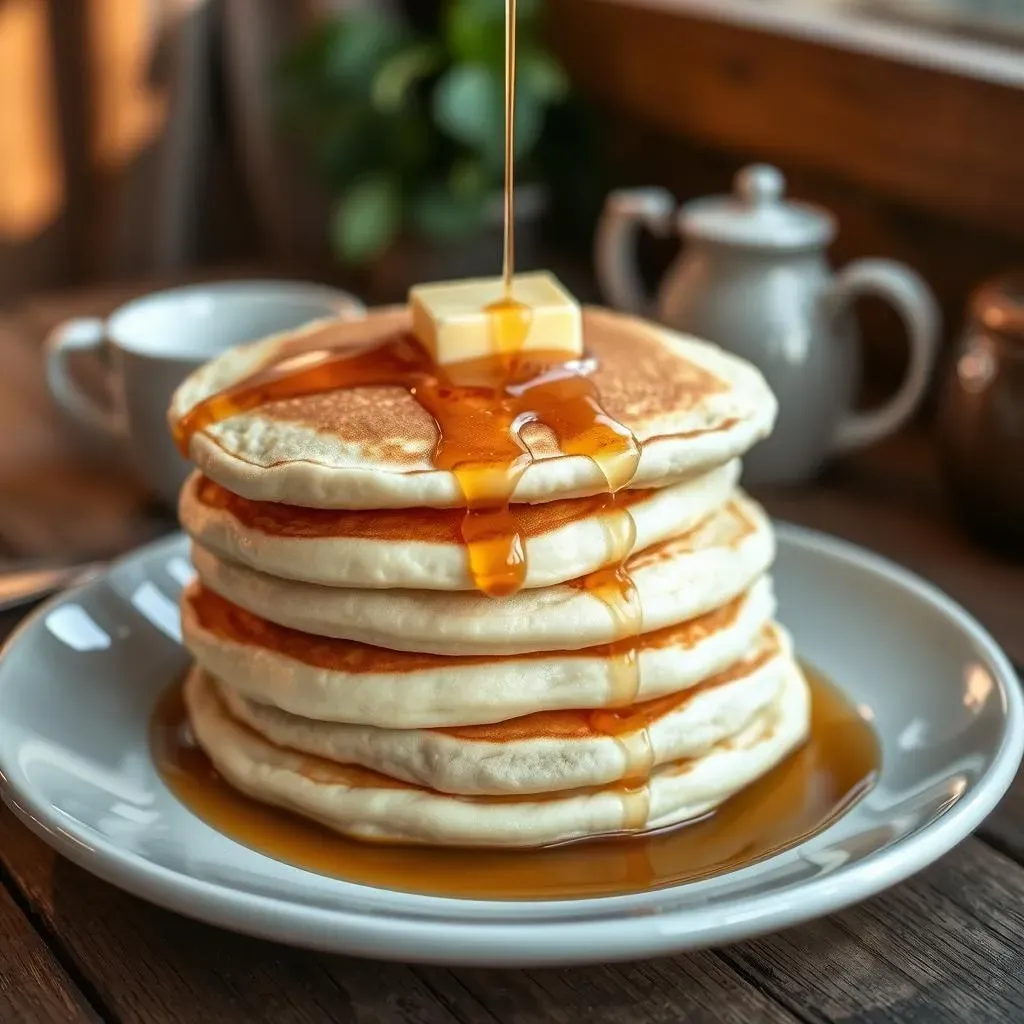Table of Contents
Ever dream of pancakes so light they practically float off your plate? I did, and that's how I stumbled upon the magic of Swans Down cake flour. It's not just any flour; it's the secret to achieving that perfect, cloud-like texture that makes breakfast feel like a special occasion. Forget dense, ordinary pancakes; we're talking about a breakfast revolution. In this article, I’m going to share my tried-and-true pancake recipe with swans down cake flour that’ll transform your mornings. We'll start by exploring why Swans Down makes such a difference, then I'll give you the recipe itself. After that, I will share my best tips for nailing it every time. Finally, we'll troubleshoot common issues and explore fun ways to tweak the recipe. So, grab your whisk, and let's make some pancake magic happen!
Why Swans Down Cake Flour Makes the Best Pancakes

Why Swans Down Cake Flour Makes the Best Pancakes
The Secret's in the Grind
so you're probably thinking, "Flour is just flour, right?" Wrong! Swans Down cake flour is different, and it's not just marketing fluff. It's milled super finely, much more so than your regular all-purpose flour. Think of it like this: all-purpose is like beach sand, while cake flour is like powdered sugar. This fine grind means there's less gluten, which is a protein that makes things chewy. Less gluten equals lighter, more delicate pancakes. It's not about being fancy; it's about getting that melt-in-your-mouth texture we all crave.
Have you ever made pancakes that were tough, or had that weird, rubbery texture? That's often because of too much gluten development. Swans Down cake flour practically eliminates that risk. The smaller particles also create a smoother batter, which means no lumps and a more even rise when you hit the griddle. It's like the difference between a hand-drawn circle and one drawn with a compass. One is a bit rough, and the other is perfectly smooth. That's what Swans Down does for pancakes, it brings the precision.
Flour Type | Gluten Content | Pancake Texture |
|---|---|---|
All-Purpose Flour | Moderate | Chewier, denser |
Swans Down Cake Flour | Low | Light, fluffy, delicate |
The Science of Fluff
It isn't just the fine grind; cake flour is also lower in protein compared to all-purpose. Protein, in this case, is gluten. And gluten, while great for bread, is a pancake's worst enemy if you're chasing fluff. The lower protein content means less gluten develops when you mix the batter. This keeps your pancakes tender. It's like trying to make a bouncy ball out of clay versus a cotton ball. One is gonna be tough, and the other is light.
Also, because of that fine texture, Swans Down cake flour absorbs liquids more readily. This means that when you add your milk and eggs, the batter comes together beautifully, creating a lovely, smooth consistency. It's not just the taste; it's the texture. The way the batter feels in your bowl is a good hint at how the final product will turn out. If your batter is lumpy, your pancakes will be too. Swans Down ensures that doesn't happen. It’s the difference between a bumpy road and a smooth highway, you want the smooth highway for your perfect pancake journey.
- Fine Grind: Creates a smoother batter.
- Low Protein: Reduces gluten development.
- High Absorption: Ensures even moisture distribution.
The Ultimate Pancake Recipe Using Swans Down Cake Flour

The Ultimate Pancake Recipe Using Swans Down Cake Flour
Gather Your Ingredients
Alright, let's get down to the nitty-gritty. You'll need a few things to make these dreamy pancakes. First, and most importantly, is 2 cups of sifted Swans Down cake flour. Don't skip the sifting; it makes a huge difference. Then, grab 2 teaspoons of baking powder, 1 teaspoon of salt, and ¼ cup of granulated sugar. These are your dry ingredients, the backbone of our fluffy friends. For the wet stuff, you’ll need 1 cup of milk (room temperature is best), 1 large egg, and 2 tablespoons of melted unsalted butter. Make sure your butter isn't too hot; it can cook the egg before it even hits the pan.
I like to lay out all my ingredients before I even start. It’s like prepping for a big art project, you need everything within reach. Having everything measured out not only speeds things up, it reduces the chance of forgetting something. And trust me, forgetting baking powder is a pancake tragedy you don't want to experience. So, double-check your list, assemble your supplies, and get ready to make some pancake magic!
Ingredient | Quantity | Notes |
|---|---|---|
Swans Down Cake Flour | 2 cups | Sifted |
Baking Powder | 2 teaspoons | Fresh for best results |
Salt | 1 teaspoon | Table salt or sea salt |
Granulated Sugar | ¼ cup | Adjust to your preference |
Milk | 1 cup | Room temperature |
Large Egg | 1 | Lightly beaten |
Unsalted Butter | 2 tablespoons | Melted, not hot |
Mixing and Cooking
Now for the fun part, let's combine everything. In a large bowl, whisk together all your dry ingredients – the sifted cake flour, baking powder, salt, and sugar. Make sure everything is well combined. In a separate bowl, whisk together the wet ingredients – the milk, egg, and melted butter. It should look like a nice, pale yellow mixture. Then, pour the wet ingredients into the dry ingredients. Gently fold everything together with a spatula until just combined. Don't overmix! A few lumps are okay; overmixing will develop the gluten and make your pancakes tough.
Heat a lightly oiled griddle or frying pan over medium heat. I like using a non-stick pan to make things easier. Once the pan is hot, pour about ¼ cup of batter onto the hot surface for each pancake. Cook for about 2-3 minutes per side, or until golden brown and cooked through. Flip when you see bubbles forming on the surface and the edges look set. The best time to flip is when your pancake tell you that they are ready. Serve immediately with your favorite toppings, and enjoy the fruits of your labor!
“The secret of getting ahead is getting started.” - Mark Twain
Tips and Tricks for Perfect Swans Down Cake Flour Pancakes

Tips and Tricks for Perfect Swans Down Cake Flour Pancakes
so you've got the basic recipe down, but let's talk about taking your pancakes from good to absolutely amazing. It's all about the little things, you know? First off, don't skip sifting that cake flour. I know it's an extra step, but it aerates the flour and makes it even lighter. Think of it as giving your flour a little spa day before it hits the batter. Also, room temperature ingredients are your friend. Cold milk and eggs can shock the batter and prevent it from rising properly. It's like trying to start a car in the arctic, it's just not gonna work as smoothly. And when you're mixing, remember less is more. Overmixing develops gluten and makes your pancakes tough, like a hockey puck. You want light and fluffy, not dense and chewy.
Another big tip? Don't overcrowd your pan. Give those pancakes some space to breathe. It's like being in a crowded elevator, nobody likes that. Also, let your pan get nice and hot before you start cooking. A cold pan can lead to uneven cooking, and nobody wants a pancake that's burnt on one side and raw on the other. It's also important to be patient. Don't flip those pancakes too early. Wait until you see bubbles forming on the surface and the edges look set, like they're telling you "I'm ready!". And finally, don't be afraid to experiment. Add a splash of vanilla extract, or a dash of cinnamon, or even some lemon zest. It’s your kitchen, your pancakes, your rules!
Tip | Why it Matters |
|---|---|
Sift the Flour | Aerates for lighter pancakes |
Use Room Temp Ingredients | Ensures better rising and texture |
Don't Overmix | Prevents tough pancakes |
Don't Overcrowd the Pan | Allows for even cooking |
Be Patient with the Flip | Ensures proper cooking on both sides |
Swans Down Cake Flour Pancake Troubleshooting and Variations

Swans Down Cake Flour Pancake Troubleshooting and Variations
so sometimes things don’t go exactly as planned, even with the best recipe. Let’s talk about some common pancake problems and how to fix them. If your batter seems too thick, it might be because you added too much flour or not enough liquid. No worries, just add a tablespoon or two of milk until it reaches the right consistency, like a thick cream. On the flip side, if your batter is too thin, you might have added too much milk. In that case, add a tablespoon of flour at a time until you get the desired thickness. It’s all about finding that sweet spot. Also, if your pancakes are cooking too quickly or burning, your pan might be too hot. Lower the heat and let your pan cool down a bit. Patience is key, my friend. Remember, cooking is both an art and science, and it takes a little practice to master.
Now, let's get into the fun part: variations! Once you've nailed the basic recipe, the possibilities are endless. Want to add a little zest? Try some lemon or orange zest to give them a bit of citrusy kick. Feeling fancy? Add a dollop of ricotta cheese to the batter for extra richness. You can also add blueberries, chocolate chips, or even some chopped nuts. The world is your pancake oyster! Think of this recipe as a canvas, and you are the artist. Don't be afraid to experiment and make it your own. And if you come up with something amazing, please, let me know!
Problem | Possible Cause | Solution |
|---|---|---|
Batter too thick | Too much flour, not enough liquid | Add milk, 1 tbsp at a time |
Batter too thin | Too much liquid, not enough flour | Add flour, 1 tbsp at a time |
Pancakes burning | Pan too hot | Lower the heat |
"Cooking is at once child's play and adult joy. And cooking done with care is an act of love." - Alice Waters
The Final Flip: Mastering Swans Down Pancakes
So, there you have it – the journey to pancake perfection using Swans Down cake flour. From understanding why this flour is a game-changer, to mastering the recipe, and tweaking it to your liking, you're now equipped to make truly exceptional pancakes. Remember, the key is in the details: the gentle sifting, the light touch when mixing, and the patience on the griddle. Don't be afraid to experiment with flavors and toppings to create your signature stack. Whether it's a lazy Sunday brunch or a quick weekday treat, these pancakes are sure to bring a smile to your face. Happy flipping!